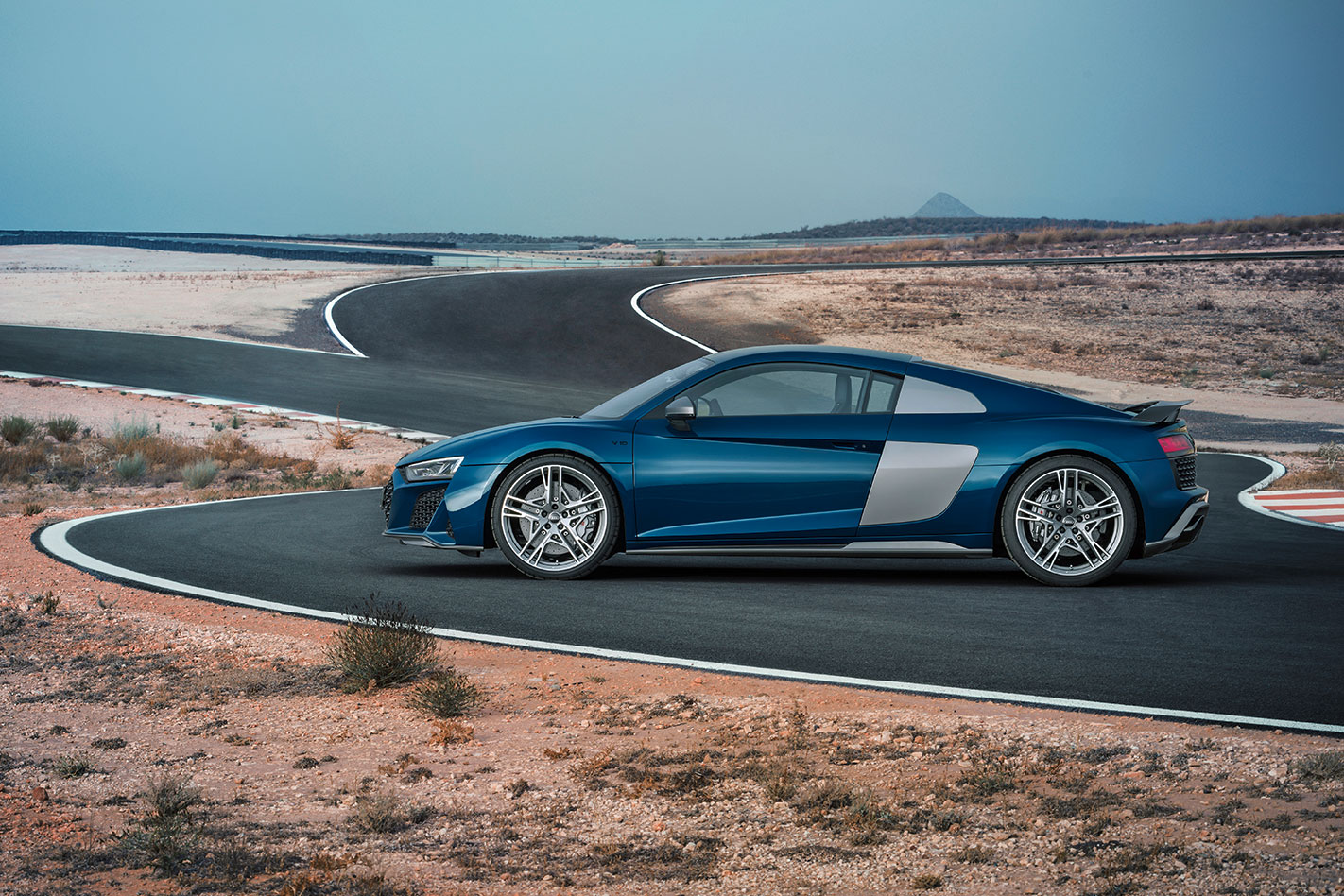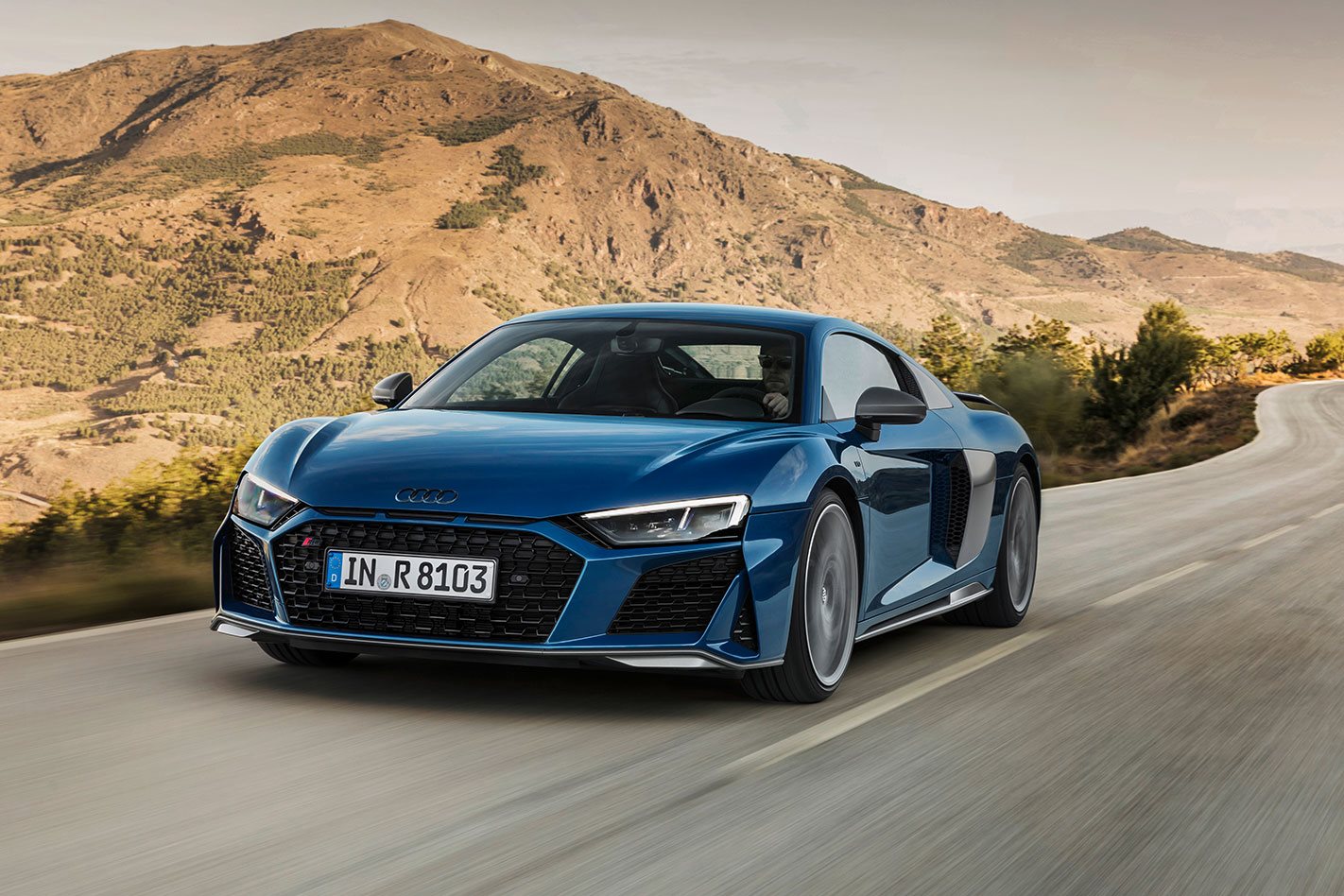WHAT IS IT?
Audi’s mid-engined supercar gets a refresh for 2019, but no messing with the basic V10, all-wheel-drive recipe.
WHY WE’RE TESTING IT
It’s the last gasp of the naturally aspirated V10, and tweaks make it more powerful than ever. Can it retain its daily-driver supercar crown?
MAIN RIVALS
McLaren 570S, Lamborghini Huracan LP610-4, Mercedes-Benz AMG GT-R
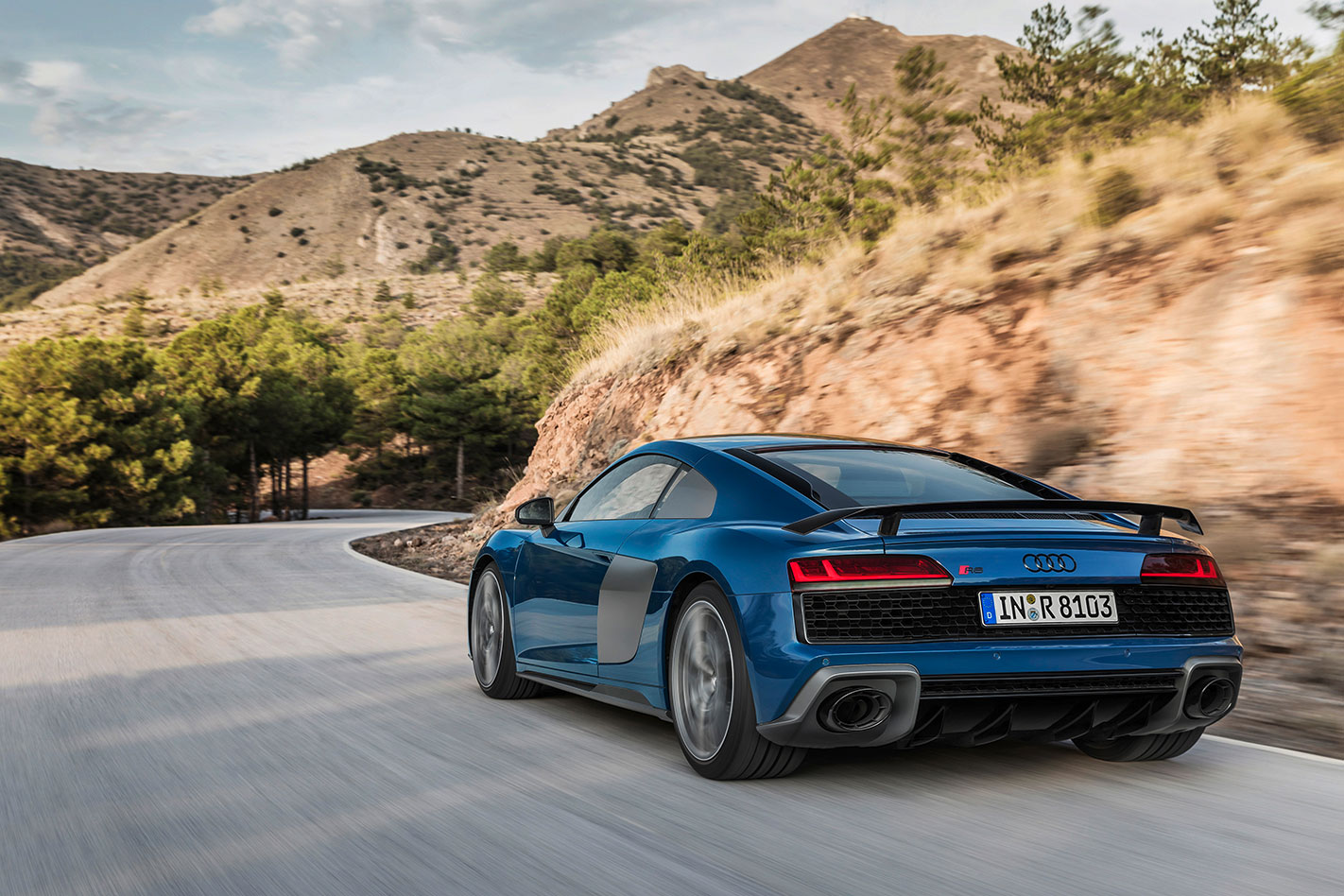
THE WHEELS REVIEW
AUDI has freshened up the Audi R8 V10 for 2019, the headline being more power from the 5.2-litre naturally aspirated V10. The base model goes to 419kW and 550Nm, increases of 22kW/10Nm thanks to calibration changes. The top-spec Performance we’re driving (formerly Plus) stretches 7kW/20Nm to 456kW/580Nm total, with some valvetrain components now uprated with titanium replacements.
That takes the R8 V10 Performance beyond even the closely related Lamborghini Huracan to which Audi has always deferred, if not the Performante. But an engineer reveals ‘pretty much all cars make 5 per cent more’. Let’s call it 485kW, so a Performance is punchier than a Performante then – unless the Lambo is also under-reporting. Whatever, it means all variants break into 320km/h (200mph) territory for the first time, including the chunkier Spyder.
We’ve come to the Ascari race circuit in southern Spain for our test drive, partly because the place is awesome, partly because the R8 is still awaiting homologation.
Flatten the accelerator in first and the all-wheel drive claws at the pit exit’s dry surface, the V10 rips round past 8000rpm, and the first-to- second gear shift thwacks in like you’re playing pinball. The small increase in performance isn’t particularly noticeable, but this remains visceral acceleration that requires some acclimatisation – I wouldn’t bet against the 3.1-second 0-100km/h time being low-ball too.
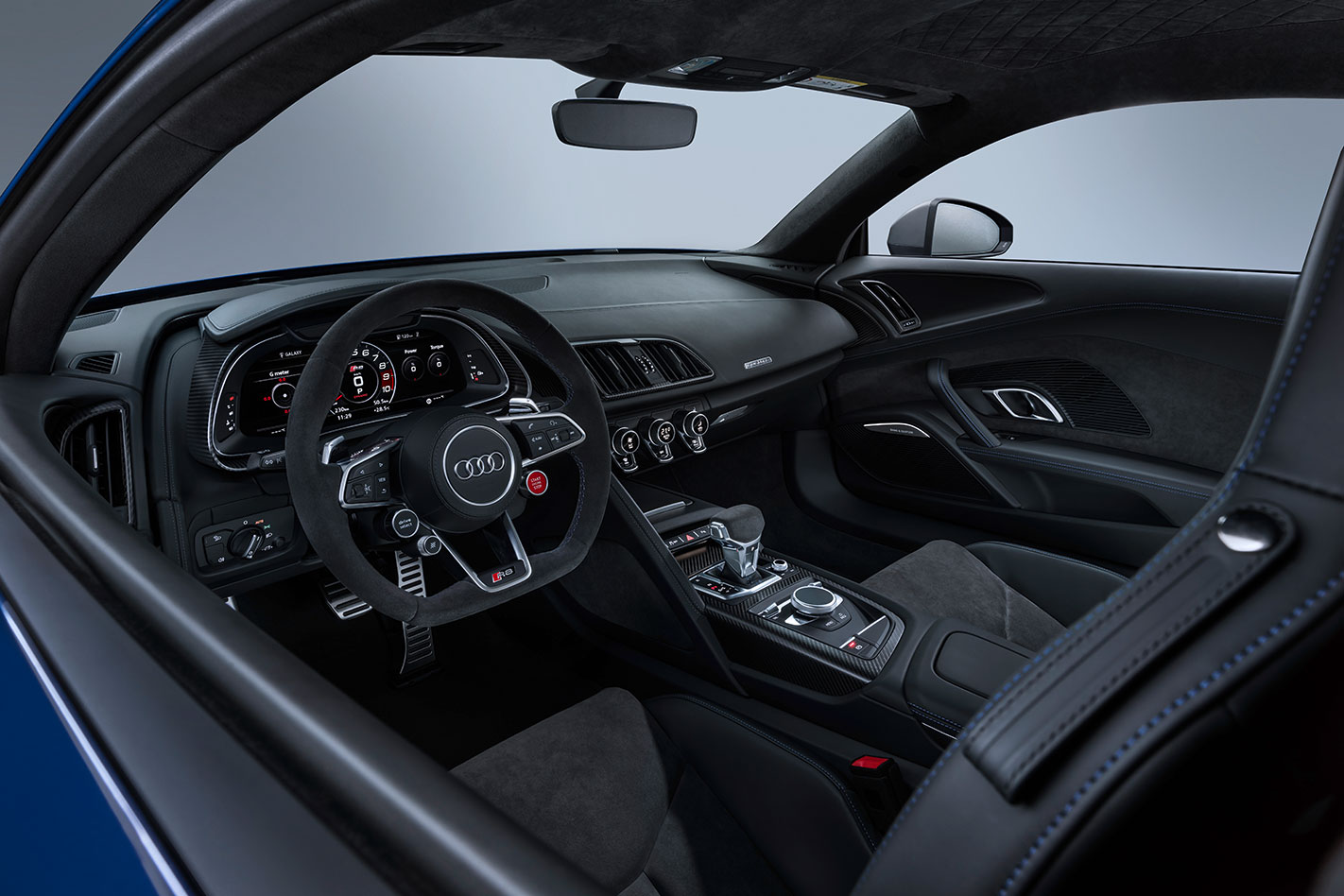
The appeal of this V10 stretches way beyond performance alone – it’s the crispness of response, how the performance soars like a horror-movie soundtrack at the scary bit, the all-consuming fury of the last grand or so to 8250rpm as the rev counter strobes red. The turbocharged McLaren 570S and 600LT can’t match this kind of excitement, plus they’re less powerful and cost more too.
The Brit fights back, of course, when it comes to torque, and you can definitely catch the R8 napping if you’re in a gear too high. The McLaren (smaller engine, no all-wheel drive) also feels every bit the near-300kg lighter it is, and its chassis and steering has the more nuanced communication skills.
Springs and dampers remain the same, but Audi says the R8’s chassis has received some attention, and there are more noticeable transitions between drive modes that we won’t detect on track. All test cars are also equipped with a new optional front anti-roll bar. Made of carbonfibre and aluminium, it saves 2kg and is displayed in the pit garage along with the standard one. The regular bar makes a fine dumbbell but you can twirl the lighter one about like a marching band baton. It’s also worth noting that all test cars are fitted with Michelin Cup 2 tyres, the stickier track-focussed rubber you’ll find on a 911 GT3. Will they be optional in Australia? No-one seems to know.

Under power, the R8 transfers every drop of power to the tarmac, and gathers speed rampantly through long corners while feeling a little nose-led with mild understeer. It’s a slightly frenetic feeling, but it’s safe and secure, and off-throttle the R8 becomes far more playful – composed under braking and quick to turn like only a mid- or rear-engined car can, but with that hunk of V10 ready to move the rear end around. You have to watch the pendulum effect, but it gives the driver options on how to position the car, and the R8 a multi-dimensional character. Impressive that the stability control’s Sport setting lets you tap into all this without clumsy intervention. We asked the engineers if the rear-wheel drive R8 RWS will re-appear, which caused much ‘I must check with my colleagues in marketing’. It was the pick of the range last time with a more fluid feel, so here’s hoping.
Software for both standard and Dynamic electric steering has been tuned. The Standard steering has a more measured, confidence-inspiring rate and weight through faster corners, but the Dynamic set-up blows through chicanes like a glove slap to both cheeks. Both are fine, but I’d take the standard system.
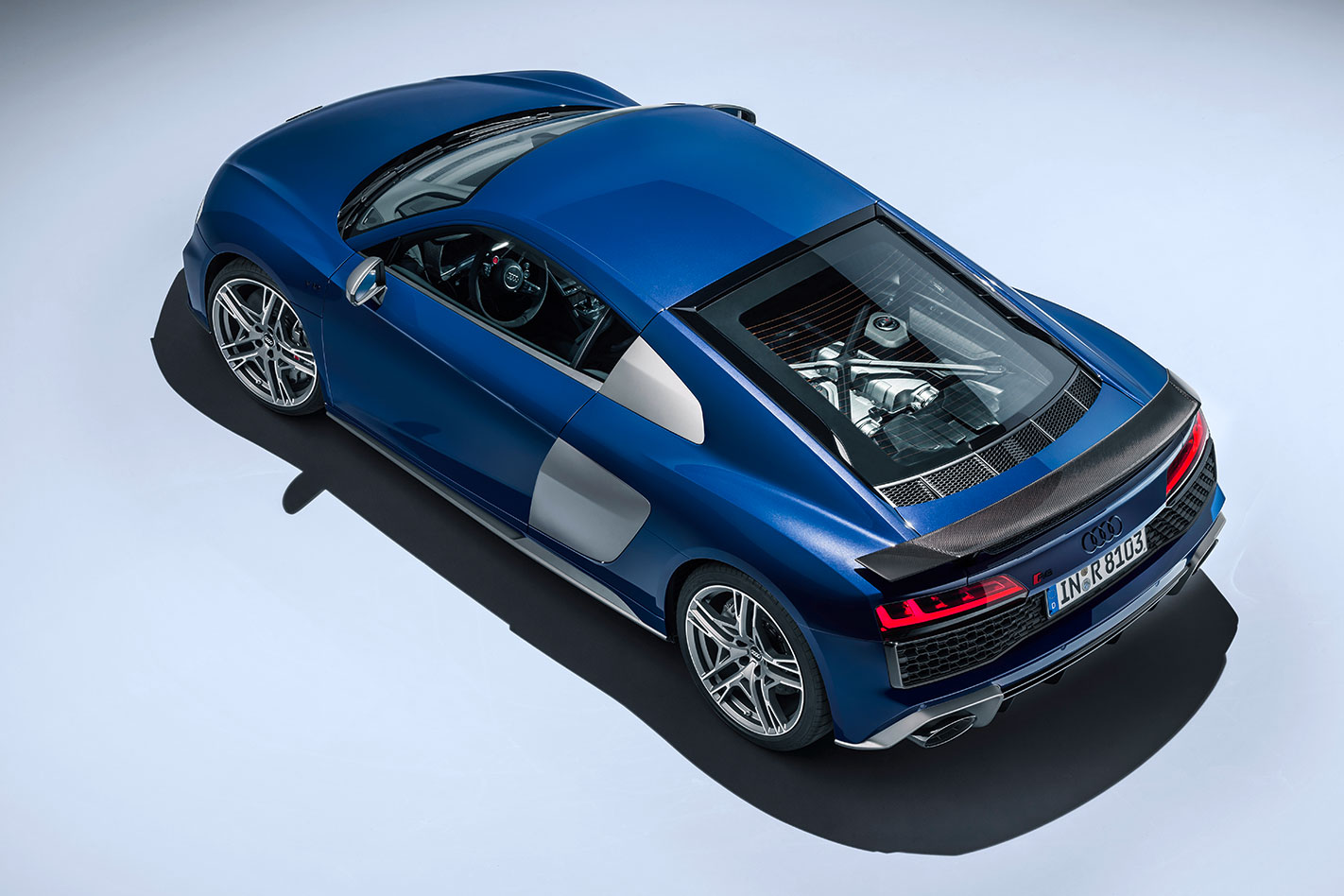
The refreshed R8 offers some cosmetic upgrades too, though this is very much the if-aint-broke-don’t-spend-loads-of-cash-fixing-it approach. At the front, a flatter, wider grille bordered from above by three little slits that recall the Ur Quattro and from below by a wider front splitter give the R8 a meaner look, like it’s wearing a mouthguard. There are two new colours (Kemora Grey, Ascari Blue), new 19-inch alloys (20s for the V10 Performance), a more upswept rear diffuser, and gloss-black detailing on the standard model, replaced by matt titanium on the Performance.
The R8’s interior is unchanged, but that means a great driving position (though the Spyder is more cramped), solid build and refinement with flashes of excitement, and infotainment that’ll get you there faster than a Ferrari, McLaren or Lambo.
These changes are not radical, then, but the R8 remains a supercar like no other, a paradoxical mix of high-tech infotainment and old school V10 engine; of Lamborghini genes and sensible-shoes usability; of searing performance at – in this rarefied segment – a relatively affordable price point.
With Audi rumoured to axe the R8 after this second generation or re-imagine it as an all-electric or plug-in hybrid, this is probably our last chance to marvel at ten cylinders screaming to an incendiary 8250rpm. Let’s enjoy it while we still can.
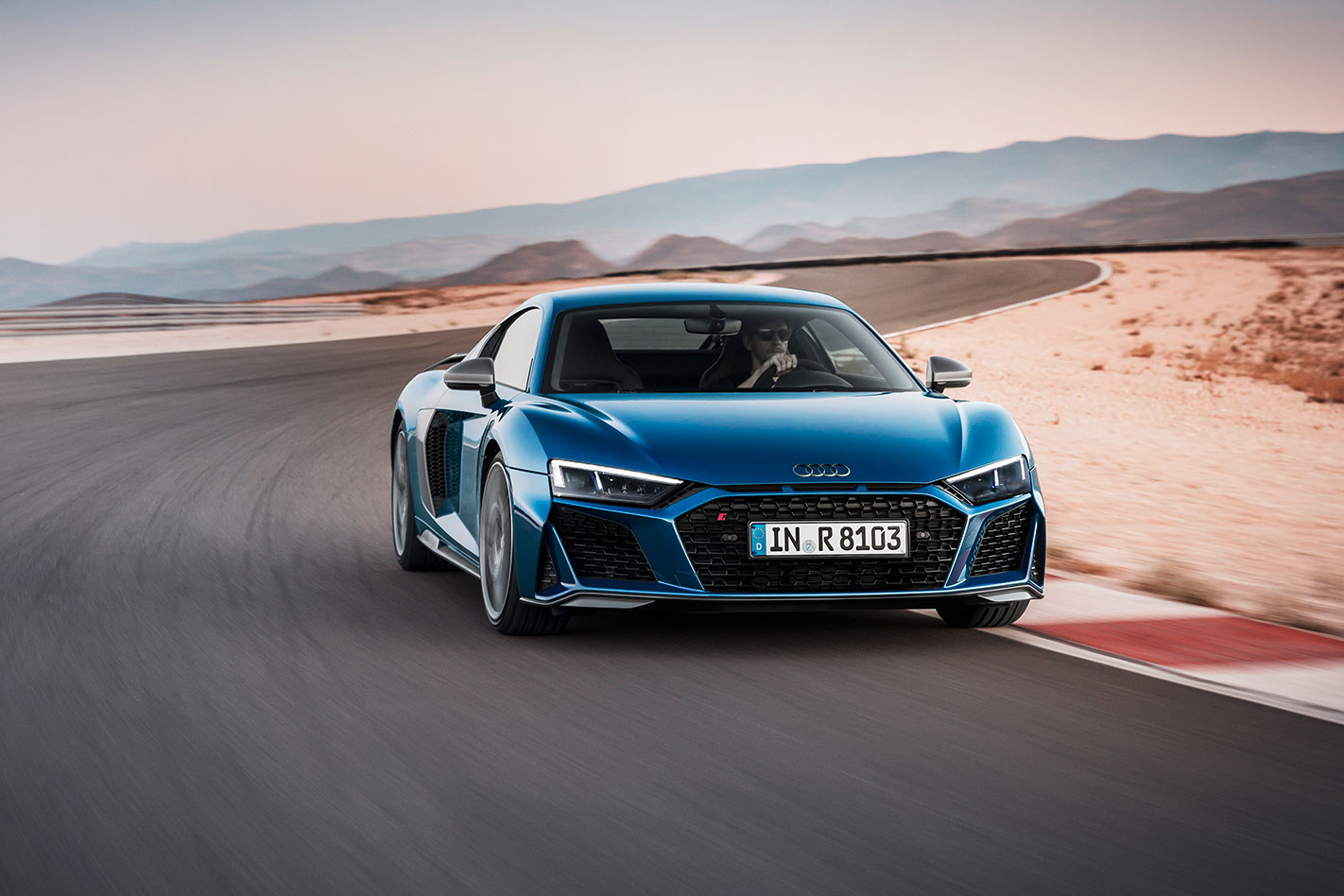
THE WHEELS VERDICT
This is a light mid-life refresh of the Audi R8, but the tweaks only enhance a unique offering – no-one else combines such a visceral engine in a package so sensible, whether that’s all-wheel-drive security, excellent infotainment or impressive refinement. It’s even relatively affordable versus the competition. If you want a supercar you can use every day, the Audi R8 remains our choice.
PLUS: White-hot V10, usability, traction, keen turn-in, playful handling off-throttle, infotainment and refinement make this the daily supercar MINUS: Bit chunky, could be more tactile, we’ve seen more ambitious facelifts, Australia might not get Cup 2 tyres we tested, brake pedal a little fuzzy
SPECS
Model: Audi R8 V10 Performance Engine: 5204cc V10, dohc, 40v Max power: 456kW @ 8000-8250rpm Max torque: 580Nm @ 6500rpm Transmission: 7-speed dual-clutch Weight: 1635kg 0-100km/h: 3.1sec (claimed) Economy: 12.3L/100km (estimated) Price: $395,000 (estimated) On sale: Q2 2019 (estimated)
